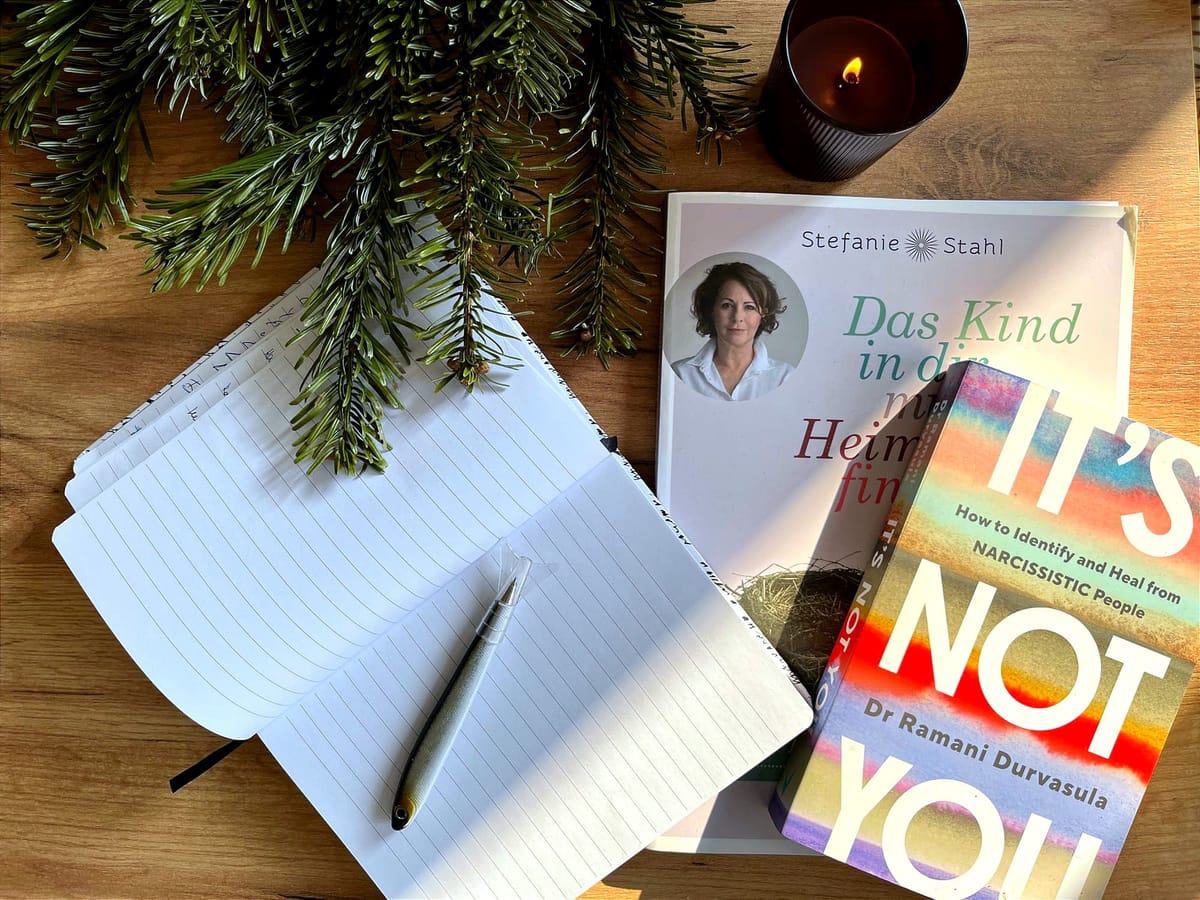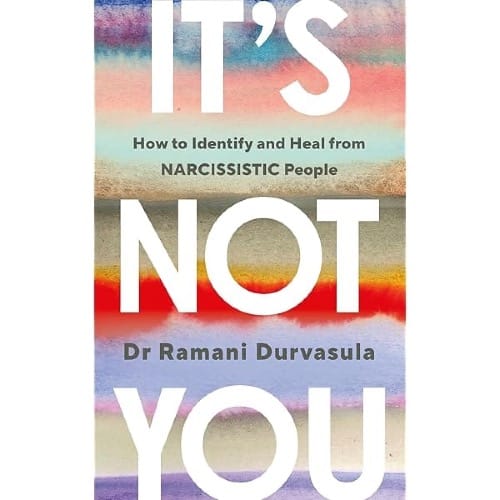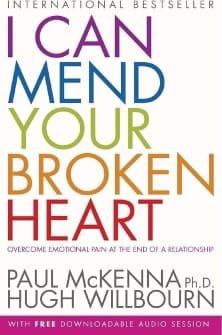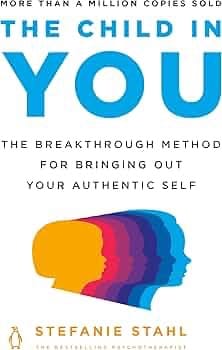Pages, Perspectives & Power - The Books That Got Me Through
Healing is more than moving on, it’s coming home to yourself. With the help of these books I reclaimed self-respect, strength, and clarity.

Today, I’m diving a little deeper into the subject and introducing you to some of my favorite books that have helped me on my journey. I find these books to be some of the most effective when it comes to learning about the narcissistic style, creating distance from it, and stepping into self-healing.

"It's Not You" by Ramani Durvasula
In this book, Ramani Durvasula analyzes the dynamics of narcissistic relationships. Many victims tend to blame themselves for the problems in the relationship. Durvasula explains how this self-blame is actually a toxic manipulation tactic used to keep victims trapped.
The book also includes reflection exercises and questions designed to help readers recognize their patterns, understand them, and ultimately reclaim their self-respect and self-love.
My Experience with "It's Not You".
I briefly mentioned this book in one of my previous posts. I was listening to it as an audiobook, ironically, at the exact moment I found myself caught in a five-hour-long barrage of his hate messages.
Almost as if life was testing me: Could I apply what I had learned?
At that moment, I failed. I engaged. I let his words get to me. But something shifted. The book helped me step outside myself and finally see what this relationship had done to me.
For the first time, I was able to step outside of myself and truly see the situation. And with that perspective came the strength to make a final, irreversible decision.
I blocked every channel. And I did what I once thought impossible: I went No Contact.
What I love most about this book—and why it is one of the best I have read on this topic—is that it does not demonize narcissists.
We live in a world that thrives on polarization. We want to categorize everything neatly. To be for something (in this case, the victim) means we must be against something else (the narcissist, the abuser).
But people and relationships are not that black and white.
Yes, patterns repeat. Sometimes, it even seems like "abusers" have attended a masterclass on How to Be a Proper Narcissist. But the truth is, these behaviors often run on autopilot, deeply ingrained in the subconscious.
Many books on this subject left me feeling unsettled. Some descriptions fit my partner perfectly, while others didn’t at all. And so, I doubted myself. Was I diagnosing him just to create a sense of certainty? Was I simplifying things instead of seeing the full complexity of the person and the situation?
Durvasula’s book gave me the answer.
She explains the different styles of narcissism—because there is no single "type" of narcissist, despite what many books and blogs suggest. One of these styles fit my former partner exactly.
And with that understanding came the clarity I had been searching for.
Durvasula does not accuse or condemn. She explains—with neutrality, insight, and depth—so that readers can form their own conclusions about their partner, their relationship, and, most importantly, themselves.

"I Can Mend Your Broken Heart" by Paul McKenna
In this book, Paul McKenna presents techniques that use hypnosis and neuro-linguistic programming (NLP) to overcome heartbreak and facilitate emotional healing. The exercises in the book aim to help readers understand the necessity of heartbreak, release old attachments, and rebuild self-confidence—allowing them to open themselves to new relationships.
The book also includes a CD with a hypnosis session designed to support the healing process.
My Experience with "I Can Mend Your Broken Heart"
We tend to suppress heartbreak, often because others don’t take it seriously or even ridicule it, as if it were just a fleeting phase. This book validated what I already felt—heartbreak is grief, and grief deserves space.
The book highlights the importance of heartbreak and how it is a necessary part of healing. It emphasizes that we need to allow ourselves to experience it fully, no matter how long it takes. Grief, anger, longing, and disappointment are all part of the process, and the only way to truly heal is to consciously move through these emotions.
The book offers exercises and techniques to help reprogram the subconscious, preventing us from getting stuck in suffering or unhealthy behavioral patterns. Instead of drowning in pain, these methods help process grief more effectively and sustainably.
Above all, self-care is the priority. The book teaches that healing is not about blaming oneself for a failed relationship but rather about approaching oneself with compassion and patience.
I listened to the hypnosis session every day for a week. I often fell asleep while listening, a welcome side effect during an otherwise emotionally overwhelming time. I liked to think that even if I wasn’t consciously absorbing the words, they were still working in my subconscious.
This book taught me that heartbreak isn’t a sign of weakness—it’s a step toward transformation.

"The Child in You Must Find a Home – Workbook" by Stefanie Stahl
This workbook is a companion to Stefanie Stahl’s bestselling book The Child in You Must Find a Home. It provides practical exercises to deepen the concepts introduced in the main book. Unfortunatelly it seems as if the workbook only exists in German language. But the main book, which is translated into English and other languages contains almost the same amount of exercises and more background information on this method. I chose the workbook because I am familiar with childwork and meant to go straight into action.
In the workboos as well as in the main book, the exercises guide readers in identifying and healing their Shadow Child (the wounded parts of their personality) while strengthening their Sun Child (the positive, resilient aspects). Through self-reflection, writing exercises, and practical instructions, readers can break old patterns, develop self-acceptance, and build healthier relationships.
My Experience with "The Child in You Must Find a Home – Workbook"
I love working with the inner child. A long time ago, I realized that this is where the key to both happiness and suffering lies—shaping how we see the world, how we connect with others, and whether we build or sabotage our own lives. That’s why this kind of work is so important to me.
I decided to commit to this workbook, working through it step by step. It requires dedication—dedication to oneself. It takes courage to face the parts of ourselves we’d rather avoid. But it’s also deeply rewarding and even exciting to uncover the mechanisms and beliefs that took root in childhood.
I’ve often asked myself why I attracted this kind of person into my life. Why did I choose him?
Through conversations with others who have experienced similar relationships, I’ve come to understand that this can happen to anyone. You don’t need a traumatic past or emotional instability to find yourself entangled with a narcissistic person. Even emotionally stable individuals are not immune—though they tend to have lower tolerance and can leave toxic relationships more quickly.
In my case, however, there were unresolved childhood wounds—wounds I thought I had already healed. Lucas was a reflection of my mother, mirroring her even in the phrases he used—despite never having met her.
I firmly believe that I had to go through this experience again in order to fully release it.
By working through The Child in You Must Find a Home – Workbook, I am retracing my childhood and my life, step by step. I am uncovering deeply buried beliefs and transforming them—creating a life that is happier and more aligned with my true self.
I would recommend this workbook to anyone—not just those recovering from a failed relationship. We are all shaped by our childhood, and many of us have lost touch with the pure, childlike, loving light within us. This book helps bring that light back to life.

The books I am sharing with you helped me dive deeper into self-reflection, recognize patterns, and rebuild a sense of self-worth. A good reminder that true growth happens when we face our shadows and embrace our light.
If you’re on a similar path, I hope these recommendations inspire you to take another step toward rediscovering the strongest, most authentic version of yourself.
Be well,
Vaselisa